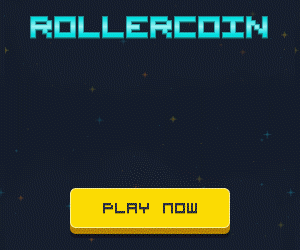Despite its introduction as an absolute novelty last October, Horizon Worlds, the first metaverse for Meta’s virtual reality platform, is not a revolutionary novelty.
Since the worldwide launch of Second Life by the company Linden Labs, in 2003, the concept of metaverse has coexisted with us within the world of gamification and virtualization of social networks, coexisting with other platforms such as Minecraft, Fortnite or Roblox, and understanding the concept as, according to the Oxford Reference dictionary, “a representation of reality carried out by means of virtual reality programs”.
This neologism valid today according to the RAE was first created by fiction writer Neal Stephenson in his 1992 novel Snow Crash, and Philip Rosedale, the founder of Second Life, created this first metaverse of ambitious perspectives inspired by this book.
What happened to Second Life?
Over the years, and after its boom around 2013-14 when it reached over one million monthly and active users, Second Life has not become a technology that has changed the way we look at the digital world, let alone a phenomenon that has changed humanity.
Second Life is not talked about, it is not advertised, and it is generally considered a thing of the past. In fact, only about half a million users currently maintain active accounts.
Linden Labs’ reluctance to update its creation based on new technologies, which include tablets, smartphones and so on (and which are indeed viable to connect to Minecraft, Fortnite or Roblox, with which these other metaverses maintain a great advantage in terms of new users), its unintuitive interface and its vintage video game appearance have not favored this metaverse at all in attracting new customers, which continues to feed on those who have been loyal to it for many years.
Many experts who bet on it in its day consider it obsolete today, although they admit that it served to spark the imagination and boost the use of simulations, gamification and augmented reality (AR) in the educational environment.
An unyielding group of loyalists
Would it therefore be a mistake to consider that Second Life could still be a viable platform for the implementation of cultural lectures and educational programs? In principle, the presence of a large group of educators who remain loyal to Second Life could prove that it is.
There are large groups of university-level educators who base their activity in Second Life, and organize weekly virtual lectures and events, such as The Science Circle, Virtual Worlds: Best Practices in Education (VWBPE), and the Virginia Society for Technology in Education (VSTE), each of which has its own virtual educational area on a highly secure, free-to-access plane.
Also abounding in this metaverse, and remaining active, are digital artists and builders who use their areas for their exhibitions, as is the case of John Stone, user name Eyeclectic, who uses the platform as part of his artistic work of spreading a religious message and celebrating nature, integrating spectacular images captured in reality with digital virtual creation.
Other important virtual museums such as the faithful recreation of The Peale in Baltimore, or the Parisien Royal Opera Garnier, just to mention a few, also stand out.
Its value for learning English
It is worth noting, in addition to all this, the undoubted value that this metaverse has in relation to the learning and practice of a foreign language, particularly English. Most of the remaining active users come from English-speaking countries and, except for the most outstanding cultural programs of the active Spanish-speaking community
such as Radio Spanish Speak or el Instituto Español Second Life, most of the events held in Second Life involve interaction and listening to the English language.
Of particular note are the Book Island creative reading and writing events or the Second Life Book Club.
In terms of formal educational institutions, we can still find the virtual campus of the University of Texas at San Antonio (UTSA), North Carolina State University and the Infolit iSchool, part of a project of the Department of Information Studies at the University of Sheffield.
Second Life still arouses the interest of teachers or future teachers interested in virtual learning spaces, such as the Spanish teacher in France Lizeth Rayo Trujillo, who is writing her thesis on virtual learning spaces and was interested in learning more about Second Life as an experimental teaching platform for language learning in a gamified virtual environment.
This metaverse, for the responsible user, offers great cultural value as a social network in which to establish healthy and safe contact with other users and practice communication in the English language if the appropriate maps are visited.
It is a metaverse that, in a more accessible way (without the need for virtual reality helmets as in the case of Meta’s Horizon), provides the teacher and the artist with opportunities to expose their own knowledge and their own creation in a gamified, interactive and safe way.
It is worth mentioning that the movement and economy of Second Life comes mostly from the Clubs, virtual sex, real estate and big brands that the inhabitants of the metaverse themselves have created.
Personally, for me Second Life is still the king of the metaverse, I have the pleasure of being an inhabitant since 2006 and in Geek Metaverse we continue and will continue to be ambassadors of this wonderful virtual world.
Long live Second Life!
Follow us on our social networks and keep up to date with everything that happens in the Metaverse!.












































